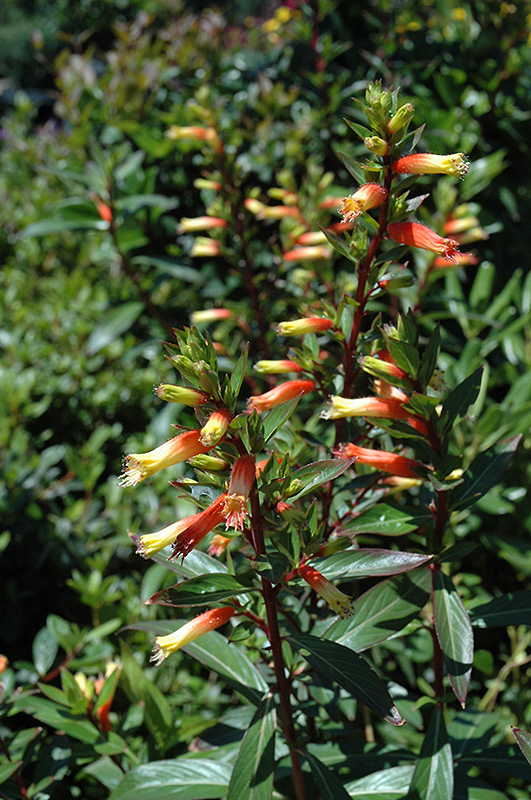Know Before You Go!
Get notified before our plants arrive in stores near you.
Plant Care Library
Height: 5 feet
Spacing: 20 inches
Sunlight:
![]()
![]()
Hardiness Zone: 6b
Description:
A truly unique perennial with tall purple stalks clothed in dark green leaves; in late spring the upper stalks are adorned with flowers that resemble candy corn, orange-red with yellow tips; a stunning presentation when massed
Ornamental Features
Candy Corn Lobelia features showy spikes of scarlet tubular flowers with orange overtones and yellow tips rising above the foliage from late spring to mid summer. The flowers are excellent for cutting. Its pointy leaves remain green in color with prominent burgundy tips throughout the season. The purple stems are very colorful and add to the overall interest of the plant.
Landscape Attributes
Candy Corn Lobelia is an herbaceous perennial with an upright spreading habit of growth. Its medium texture blends into the garden, but can always be balanced by a couple of finer or coarser plants for an effective composition.
This is a relatively low maintenance plant, and is best cleaned up in early spring before it resumes active growth for the season. It is a good choice for attracting butterflies and hummingbirds to your yard. It has no significant negative characteristics.
Candy Corn Lobelia is recommended for the following landscape applications;
- Mass Planting
- General Garden Use
Planting & Growing
Candy Corn Lobelia will grow to be about 5 feet tall at maturity, with a spread of 24 inches. When grown in masses or used as a bedding plant, individual plants should be spaced approximately 20 inches apart. It grows at a fast rate, and under ideal conditions can be expected to live for approximately 5 years. As an herbaceous perennial, this plant will usually die back to the crown each winter, and will regrow from the base each spring. Be careful not to disturb the crown in late winter when it may not be readily seen!
This plant does best in full sun to partial shade. It prefers to grow in average to moist conditions, and shouldn't be allowed to dry out. It is not particular as to soil pH, but grows best in rich soils. It is somewhat tolerant of urban pollution. This is a selected variety of a species not originally from North America, and parts of it are known to be toxic to humans and animals, so care should be exercised in planting it around children and pets. It can be propagated by division; however, as a cultivated variety, be aware that it may be subject to certain restrictions or prohibitions on propagation.
A NetPS Plant Finder tool

